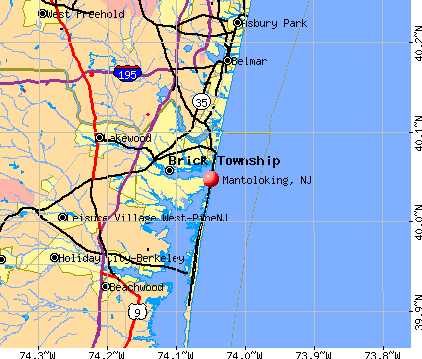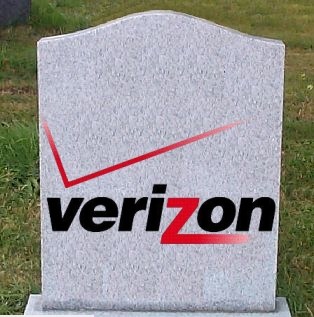 Two former interns for Bell Mobility have filed complaints with Canada’s labor department alleging the company exploited an internship program to acquire the ultimate in cheap labor.
Two former interns for Bell Mobility have filed complaints with Canada’s labor department alleging the company exploited an internship program to acquire the ultimate in cheap labor.
Jainna Patel, 24, spent five weeks at the wireless phone company’s intern campus in Missassauga, Ont. She was enrolled in Bell’s Professional Management Program (PMP), intended to expose workers to the fast-paced telecommunications industry. Patel expected to work with advanced wireless telecom technology and get an introduction to the industry over the course of the three or four-month program. Instead, she and other workers allege they were exposed to 12 hour days doing unpaid entry-level work including phone surveys and basic market research that directly benefited Bell and likely violated Canadian labor laws.
“It felt like I was sitting in an office as an employee, doing regular work. It didn’t feel like a sort of training program,” Patel told CBC News. “They just squeezed out of you every hour they could get and never showed any intent of paying.”
Bell’s PMP invites nearly 300 post-secondary graduates each year to work in the special facility, segregated from regular Bell employees.
Interns are allegedly pressured to work long hours and late, sometimes until 3am, and some left afraid to ask too many questions or complain.

Patel
One intern interviewed by the CBC said he lasted two months in the program and felt taken advantage of performing tedious market research that helped the company place cell towers and advertising billboards. He added he was chastised if he arrived late or complained about overtime hours.
He noted many interns had few opportunities in the jobs market, including at Bell, and many eventually returned to living at home, unemployed.
“I didn’t learn anything,” he said. “I learned not to trust corporations. I learned how life works. Anything I learned professionally was from the other interns.”
Toronto lawyer Andrew Langille, who specializes in internships and labor law, estimates the majority of the 300,000 unpaid interns working in Canada are performing work that directly benefits their host companies in violation of Canadian labor laws.
“Employers decided to use the poor economic conditions and the poor labor market as a carte blanche to begin replacing paid employees with unpaid ones,” Langille claims, noting he hears more complaints about Bell’s internship program than any other program in Canada.
“If you are out of school and you are just providing free work for an employer, then it is typically illegal,” said Langille.
But provincial laws often differ from federal law, opening up loopholes that some companies use to flout labor laws.

Bell’s Creekbank Campus in Ontario.
In Ontario, provincial regulated employers, which do not include Bell, must provide training that benefits the intern without reaping any benefit from the work the intern does. Bell, which is federally regulated, is covered by Canada’s looser Labour Code, which avoids spelling out specific rules governing internships. Case law and past precedent have provided some general guidance that employers should follow, including the fact almost all work should be compensated, but it remains less clear-cut.
Patel’s complaint asks Bell to compensate her almost $2,500 in unpaid wages for her work.
Patel also explained she felt intense pressure from Bell managers to stay quiet and not file any complaints against the program, which at least one manager suggested could be at risk if the government intervened. Patel was told that could result in hundreds of interns being sent home.
Langille was unmoved.
“Is it permissible that a company that makes billions of dollars each year in profits is not paying the minimum wage? It’s ridiculous. A lot of the companies that are using unpaid labor have the ability to pay but choose not to — to save money,” Langille said.
Patel is now back at home worried she will get blacklisted by the industry for being a troublemaker.
[flv width=”480″ height=”290″]http://www.phillipdampier.com/video/CBC BC Bell accused of breaking labour law with unpaid interns 6-24-13.flv[/flv]
Jainna Patel talks with the CBC about her experience as an unpaid intern for Bell Mobility, Bell Canada’s wireless division. (3 minutes)


 Subscribe
Subscribe Time Warner Cable’s decision to spend $11 billion to broadcast Los Angeles Lakers and Dodgers games at an estimated cost of $50-60 a year per subscriber is the subject of a
Time Warner Cable’s decision to spend $11 billion to broadcast Los Angeles Lakers and Dodgers games at an estimated cost of $50-60 a year per subscriber is the subject of a  With promotions from Time Warner Cable
With promotions from Time Warner Cable  With requirements like that, customers can easily be tripped up along the way and get rejected for the rebate.
With requirements like that, customers can easily be tripped up along the way and get rejected for the rebate. If your rebate request was denied and you made a good faith effort to follow the rules, don’t give up and say goodbye to $200.
If your rebate request was denied and you made a good faith effort to follow the rules, don’t give up and say goodbye to $200. A California federal judge has rejected a class action case against Comcast for allegedly hiding modem fees as high as $15 a month when signing up new customers.
A California federal judge has rejected a class action case against Comcast for allegedly hiding modem fees as high as $15 a month when signing up new customers. Judge Armstrong wrote that Diacakis should have come to court with evidence beyond the spoken promises of a handful of Comcast salespeople the plaintiff identified only by their first names. She was swayed by Comcast’s arguments:
Judge Armstrong wrote that Diacakis should have come to court with evidence beyond the spoken promises of a handful of Comcast salespeople the plaintiff identified only by their first names. She was swayed by Comcast’s arguments: Six months after Hurricane Sandy struck the northeastern United States, a significant number of Verizon customers are now learning they will never get their landline service back.
Six months after Hurricane Sandy struck the northeastern United States, a significant number of Verizon customers are now learning they will never get their landline service back.
 The FCC’s short response to Anne’s detailed complaint:
The FCC’s short response to Anne’s detailed complaint:
